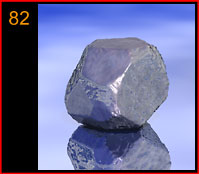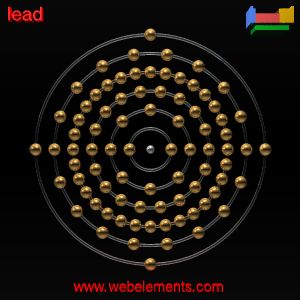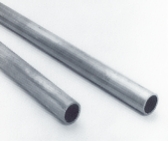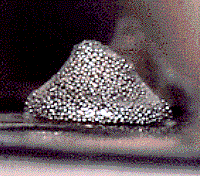|
|
|
|
|
... ... ... ... ... ...
|
THE BASICS:
HISTORY: Known since 3500 B.C. Egypt, lead was probably one of the first metals to be produced by man. The oldest lead piece is in the British Museum and dates from 3800 A.D.. The manner in which prehistoric people extracted lead from its minerals is not well-known. However, there are vestiges of very rudimentary stone furnaces, where these people heated up the lead minerals with bonfires to extract the element. There is also evidence that the Chinese produced metallic lead about 3000 B.C., and that Phoenicians had explorations close to deposits in Spain, in 2000 B.C.. In the 5th century B.C. the Romans made an extensive exploration of lead deposits in the whole Iberian Peninsula. From 700 A.D. to 1000 A.D., the lead and silver mines of Germany, in the Rhine valley and in the Hartz mountains, were very important, just as those of Saxony, Silesia and Bohemia in the 13th century. In the 17th century, the lead foundries flourished in Great Britain, specially those located in Wales and Derbyshire. http://www.frhamsafety.com/Lead_Products.htm SOURCE: Lead is obtained chiefly from the mineral galena by a roasting process. At least 40% of lead in the UK comes from secondary lead sources such as scrap batteries and pipes. OCCURRENCE: Lead is not very abundant, its relative rates being smaller than those of other metals as the aluminum, iron, magnesium, titanium, nickel, etc.. However, it is more abundant than cobalt, tin, cadmium or gold. The more important lead minerals are galena (PbS), anglesite (PbSO4) and cerussite (PbCO3), respectively with 86%, 68% and 77% of lead. Other minerals that contain lead are linarite, pyromophite, mimetite, vanadite, crocoisoite and wulfenite. The main deposits of lead minerals are located in the USA, Peru, Argentina, Bolivia, Australia, Zambia, South Africa, Germany, Spain, Sweden, Italy and Serbia. USES: Lead alloys are largely used in industry. The addition of a small percentage of arsenic or antimony to the lead increases its hardness and mechanical resistance, protecting it from abrasion. The calcium-lead and the tin-lead alloys are used in coating certain electrical cables. Solder is a lead-tin alloy. The addition of bismuth, cadmium, or mercury can also affect the melting point of solder. Lead is very resistant to corrosion and is often used to store corrosive liquids. Lead pipes from Roman times are still in use today. Great quantities of lead, both as the metal and the dioxide, are used in batteries. Lead is also used in cable covering, plumbing, and ammunition. Tetraethyl lead is used as an anti-knock agent in petrol and as an additive in paints. The use of lead in plumbing, petrol, and paints has been reduced in the past few years because of environmental concerns, as lead is a cumulative poison and is thought to affect brain development and function especially in young children. Lead oxide is used in the production of fine crystal glass. With its high density, lead is used as a shield against X-rays, gamma-rays, and various other radiation. Lead arsenate can be used as an insecticide. Lead nitrate is used in the making of fireworks. BIOLOGICAL INFO: Generally, lead compounds are noxious for the animals. The effect of the absorption of the element in plants does not seem serious. However, this accumulated lead will be absorbed by the animals through ingestion. That is why lead compounds are not used in pesticides or insecticides. Lead and its sulfide are incapable of absorption, and are considered practically innocuous. However, the soluble salts, such as the chloride, the nitrate, the acetate, etc. are very poisonous. The main intoxication cause with lead is the exposure to vapors and dusts of its compounds. The intoxication symptoms are intestinal malfunction, strong abdominal pains, diarrhea, appetite loss, nausea, vomiting and cramps. GENERAL INFO: Lead is stable to air and water, but will tarnish in moist air over long periods. It dissolves in nitric acid. Lead is a poor conductor of electricity.
|






